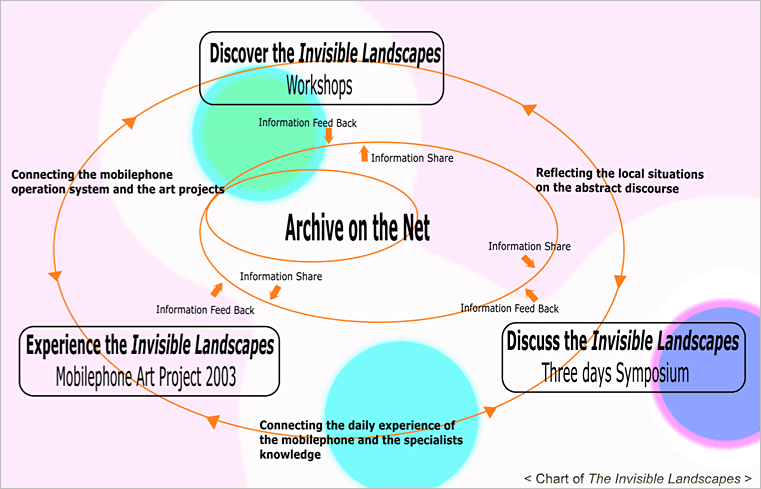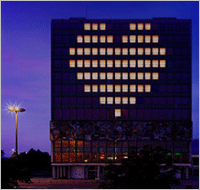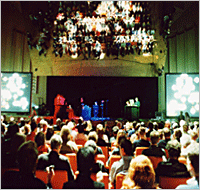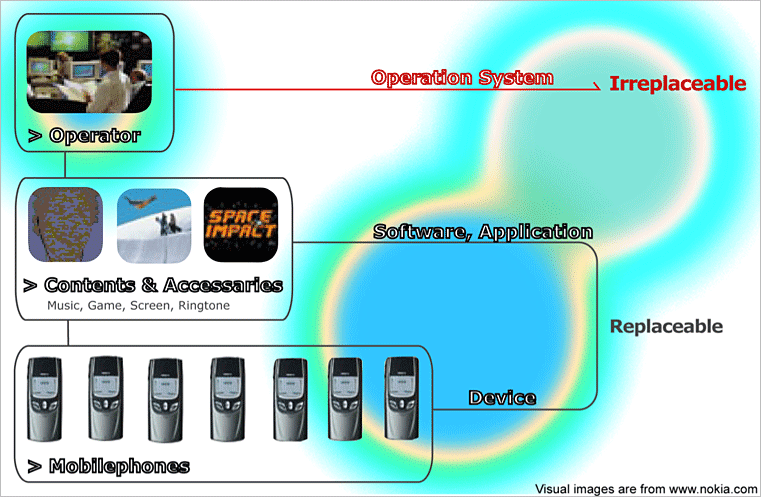Research, Curatorial Practice and Writing
Malmö (2003)
The mobile phone has become a very popular communication medium today. Most of us have experienced hearing their ringtones in the middle of a conference, in the streets, on the train. According to a research project that was conducted by the Communication Institute in Tokyo, the 2001 diffusion rates of mobile phones were at 71% in Sweden, at 73% in Finland, at 61% in Denmark. This wide diffusion which, in the meantime has exceeded the limit of “one mobile phone per person” in a number of countries, is creating a variety of invisible changes in our daily lives, changes which I decided to call “The Invisible Landscapes”. The sudden, unexpected phone calls we receive in public surroundings epitomize a new way of communication, a transformation of the boundaries between public and private, a shift in time perception – and it also raises questions about security and surveillance. This conglomerate of open questions is holding up a curious tension. The mobile phone already works as a very intimate tool for most of us; yet we still know very little about it. Most information that constitutes our knowledge consists of a mix of facts, and factoids, provided by telephone companies in their advertising campaigns, on the other hand, ambiguous rumors or myths play an important role in the public image of the mobile phone as a “quasi-magic” object. Therefore, it is crucial for all to know more about this medium.
1. General description of the Project
“The Invisible Landscapes” was a group of projects on the culture and politics of the mobile phone, which was held from August 16 through September 7, 2003, in Malmö. It consisted of three parts: workshops, an art project, and a symposium; in addition to that, it also included an archival section.

A) Discover The Invisible Landscapes (August 23, 24, and August 30, 31, 2003)
A Workshop with the title “Traceability” was held in Malmö by the artist Noriyuki Fujimura in collaboration with Miya Yoshida. There were four workshops, each of which aimed at an understanding of the functioning of the mobile phone, both theoretically and physically.
B) Experience The Invisible Landscapes (August 16 to September 6, 2003)
The Invisible Landscapes Project invited a group of artists from Sweden, Norway, Finland, U.S.A., and Japan. Each artist presented his/her own artwork that concerns the operation system of the mobile phone in public spaces in Malmö. The project strives for involving all the mobile phone carriers in the city during the three weeks exhibition period. It aimed at providing a channel to experience the “invisible landscapes” through the artworks that were newly developed by the artists, while pointing new possibilities of the mobile phone.
C) Discuss The Invisible Landscapes (September 4-6, 2003)
A three day symposium on mobile phones was held at Rooseum Center for Contemporary Art in Malmö at the end of the project period. It aimed at reviewing what the project had explored in the course of three weeks, and was to provide a forum for further discussion, with contributions from specialists of various professions (academics, businessmen/women, artists).
Objectives of the Project
Even though the mobile phone has become such a popular medium and has undoubtedly transformed our daily life styles, we only have limited information and the little understanding of the mobile phone. “The Invisible Landscapes” aimed at deepening and widening our understanding of mobile phone culture and the new phenomena created in and around it. It worked as a general introduction to the subject and tried to spark interest in individuals to realize the significance of this device, and to further think about our present situation.

 The mobile phone has already received a lot of attention, from almost every possible perspective. Already in the past, artists, musicians and scientists have been fascinated by the mobile phone, and have made it a central part of their work. Some important past projects include “Dialtones” by Golan Levin (2001) 1 and “Blikenlight” by Chaos Computer Club (2001) 2 and Jenny Holzer’s SMS Message Art Project 3.
The mobile phone has already received a lot of attention, from almost every possible perspective. Already in the past, artists, musicians and scientists have been fascinated by the mobile phone, and have made it a central part of their work. Some important past projects include “Dialtones” by Golan Levin (2001) 1 and “Blikenlight” by Chaos Computer Club (2001) 2 and Jenny Holzer’s SMS Message Art Project 3.
___
1 Ars Electronica Festival/Linz/2001
2 Alexanderplatz/Berlin/2001
3 Wanas/2002 Jenny Holzer
4. Considering the System

Most previous projects have taken pleasure out of the new technological developments and tried to develop specific applications and contents. However, as the new devices and applications are transitory and replaceable, they have not yet pay so much attention to the actual impact of the mobile phone on our lives. This project addresses that part of the system that is the least easily replaceable: the operating system. “The Invisible Landscapes” is a mobile phone project, which considers the operating system from various angles: from technological to theoretical, political and environmental. The project combined commissioned and already existing artistic contributions and a curatorial stratum of commentary, reflection, and discussion. This was an open invitation to viewers to enter into a spatialised discourse. The “juxtassemblage” of different methodological paradigms of description, critique, and discussion represented an attempt to take up the technological challenges of the mobile phone in communication in general.
___